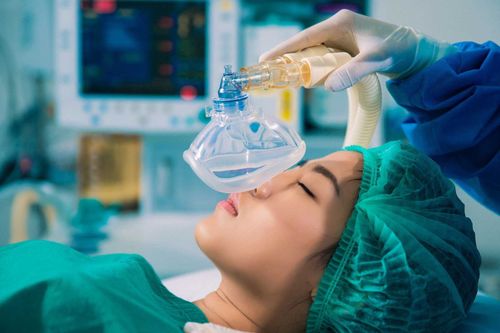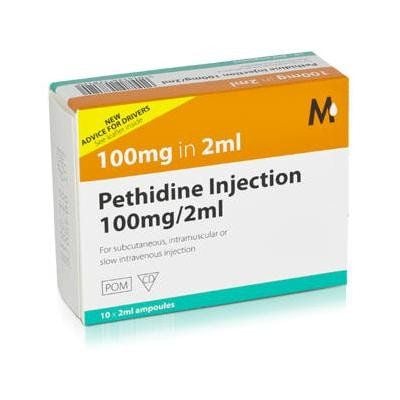This is an automatically translated article.
The article is professionally consulted by Master, Doctor Ta Quang Hung - Department of General Surgery - Vinmec Da Nang International General Hospital.
If the patient is about to undergo surgery, the patient is usually anesthetized to fall asleep, temporarily forgetting about the pain. Doctors often anesthetize for long surgeries or surgeries that require the patient to be immobilized in an uncomfortable position. There are two main types of anesthetics: inhalation anesthetics and intravenous anesthetics.
1. When is anesthesia needed?
Anesthesia helps the patient to fall asleep and feel no pain during the surgery. After the surgery is over, the doctor will give drugs to help the patient regain consciousness quickly and the patient will not have any memory of the procedure. If the patient is on a ventilator during surgical anesthesia, when all conditions are met, the patient will be disconnected from the ventilator so that he can safely breathe normally as usual. After that, the patient was taken to the recovery room for careful monitoring and pain medication was used as indicated. You may feel a little lethargic, sleepy, and nauseous after surgery, but this will soon go away. When the body gradually stabilizes, the patient will be transferred to the usual ward or home.
Gây mê trước khi phẫu thuật
2. What is an anesthetic?
Anesthetics are reversible central nervous system depressants at therapeutic doses. It has the effect of causing loss of consciousness, loss of sensation (pain, heat, cold...), loss of reflexes, muscle relaxation but without disturbing circulatory and respiratory functions.Anesthetics cause CNS depression in the following order: The upper cortical - cerebral - subcortical - subcortical and spinal centers.
By route of use, anesthetics are divided into 2 types:
Inhalation anesthetics: Ether Ethylic, Nitrogen oxide (N2O), Chloroform, Desfluran, Halothan, Enfluran, Isofluran, Methoxyfluran, Sevofluran... Intravenous anesthesia: Thiopental, Propofol, Ketamine (Ketalar), Fentanyl, Etomidate, Gamma OH...
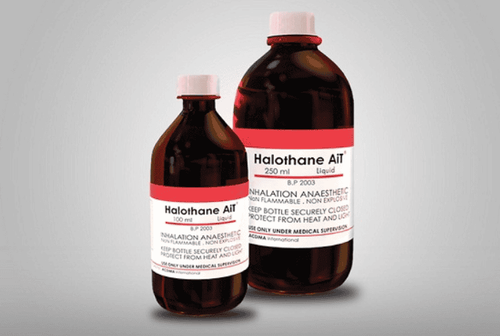
Thuốc gây mê Halothan
3. Criteria for evaluation of anesthetic drugs
An ideal anesthetic should meet the following requirements:Has a strong enough anesthetic effect and is sufficient for surgical use Rapid anesthesia, sedation, rapid recovery Loss of reflexes and muscle relaxation in The level is suitable for surgery, does not affect the respiratory and circulatory systems. High level of safety, no side effects at therapeutic doses, low toxicity Non-flammable, easy to store, reasonable cost However, no anesthetic drug can fully meet all the above criteria. Therefore, in a surgery, people often combine both forms of inhalation anesthesia with intravenous anesthesia to increase the effectiveness of anesthesia.
4. Effects of anesthetics through inhalation
Inhalational anesthetics commonly used to maintain anesthesia may also be used to induce anesthesia (especially in children). Inhalation anesthetics are usually in the form of a gas or a volatile liquid. When the patient breathes in, the anesthetic will go from the nose to the lungs, diffuse into the blood and then to the central nervous system and cause an inhibitory effect. The patient will have the following signs: sedation, muscle relaxation, decreased consciousness, loss of reflexes, apathy and a state of anesthesia appear.With its liquid and gas properties, inhalation anesthetics have the following advantages: easy to use, easy to adjust the dose, quickly absorbed, quickly eliminated (removed through the lungs, so it helps to eliminate complications).
In addition, anesthetic drugs also have effects on the following organs:
For the respiratory system: Most anesthetic drugs through inhalation cause respiratory depression to different degrees. Of which, the strongest inhibitors are Enfluran and Isofluran. For the brain: because anesthesia reduces metabolism in the brain but increases blood flow to the brain, it also contributes to increased cranial pressure (especially in people with head trauma or brain tumor). Nitrogen Oxid is the drug to limit the increase in cranial pressure. For the cardiovascular system: In general, anesthetics (Halothan) cause cardiac depression, vasodilation and hypotension. However, some drugs such as isofluran, methoxyfluran and enfluran can cause an increase in heart rate. For the muscles: Most inhaled anesthetics have a muscle relaxant effect On the kidneys: All anesthetics decrease glomerular filtration rate and renal blood flow due to increased resistance renal vessels, but each type has a different degree of influence.

Thuốc gây mê qua đường hô hấp gây ức chế hô hấp
5. Classification of anesthetics by inhalation
5.1. Diethyl Ether is a clear, colorless, water-insoluble liquid with a distinctive odor and is flammable and explosive. When exposed to air, the light Ether converts to Ethyl Peroxyd which is very toxic.Advantages: Anesthesia is slow, safe. Stretching is appropriate in stage 3, the safety margin is wide, and it has little effect on the heart. Cons: At anesthetic doses, Ether slightly stimulates the sympathetic nervous system, causing the release of catecholamines, so it causes a slight increase in heart rate and blood pressure, and also causes cerebral vasodilation, increased cranial pressure. Ether causes a slight dilation of the trachea, but strongly stimulates the respiratory mucosa, so it can increase sputum secretion, cause reflex laryngospasm, and induce vomiting. Due to the effects of prolonged coma, easy vomiting and irritation, Ether is rarely used at present.
Indications: Anesthesia for minor surgery, short, in combination with other anesthetics to reduce the dose. Contraindicated for surgery over 90 minutes.
5.2. Halothan Halothan is a colorless, volatile, aromatic, non-flammable liquid, slightly soluble in water.
Advantages: Due to the relatively high anesthetic activity, the anesthetic effect is fast and strong (4 times that of Ether), the patient wakes up quickly (<1 hour), does not cause stimulation. The drug also does not irritate the respiratory tract, does not increase secretions and has a relaxing effect on tracheal smooth muscle. Cons: The ability to relieve pain and sedation is poor, so it is often combined with pain relievers and sedatives. Halothan also causes respiratory depression, reducing respiratory flow, so if deep anesthesia is easy to cause tissue hypoxia, acidosis and respiratory arrest, it must be combined with oxygen breathing measures.
Like other anesthetics, Halothan increases blood flow to the brain leading to increased cranial pressure and arrhythmias.
Halothan causes an immune response, so repeat use should be limited, if repeated use is required, at least 3 months apart.
Contraindications: In the following cases: malignant high fever, used in obstetrics (except in cases where uterine dilation is required), not in combination with enzyme monoamine oxidase (MAO) inhibitors.
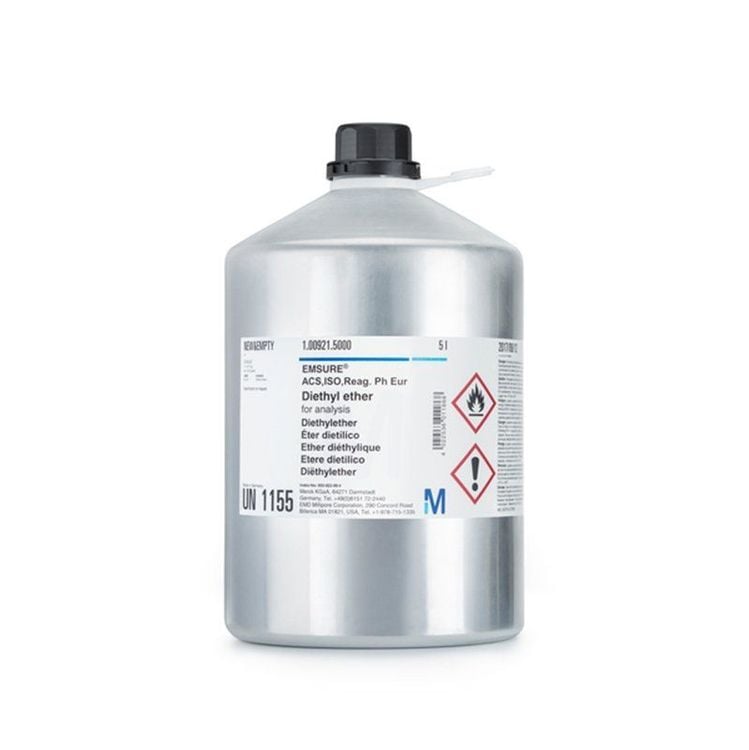
Diethyl Ether thuốc gây mê đường hô hấp
Advantages: Strong anesthetic similar to Halothan, fast recovery. Good muscle relaxant, little effect on breathing, less toxic to liver and kidney. Enfluran is considered a new, widely used inhalation anesthetic. Disadvantages: When prolonged anesthesia can cause respiratory failure, circulatory failure, arrhythmia. May cause postoperative nausea, vomiting (mild than Halothan). If used repeatedly can cause liver toxicity, seizures. 5.4. Isofluran Advantages: Rapid anesthesia, maintaining good cardiovascular circulation. Rarely occurs cardiac arrhythmias, potentiation of the effect of muscle relaxants. Less hepatotoxic than Enfluran. It is an inhaled anesthetic widely used in therapy. Cons: When used in high concentrations, it can cause respiratory depression or hypotension. When used in childbirth, it can prolong delivery and postpartum bleeding (due to good muscle relaxation).
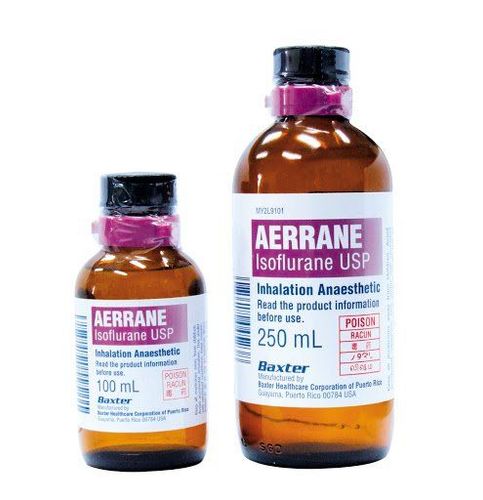
Thuốc gây mê Isofluran
6. Complications when using anesthetics
6.1. Complications during anesthesia On the respiratory system: laryngospasm, increased secretion of respiratory secretions, respiratory arrest due to reflex. On the cardiovascular system: Syncope due to reflex cardiac arrest, hypotension, drug shock, arrhythmia (ventricular fibrillation). Gastrointestinal : Nausea, vomiting obstructs the airways when vomit overflows the lungs. 6.2. Complications after anesthesia On the respiratory system: Inflammation of the respiratory tract (inflammation of the airways, bronchi, pneumonia...) is usually caused by Ether. On the cardiovascular system: Risk of heart failure due to prolonged anesthesia causing inhibition of heart activity, toxic heart. On other organs: Liver failure, kidney failure, intestinal paralysis, bladder paralysis due to the muscle relaxant effect of anesthetics. Part of the anesthetic by inhalation is metabolised in the liver causing hepatotoxicity. Inhalation anesthetics are also eliminated by the kidneys and can cause nephrotoxicity.Master. Doctor Ta Quang Hung has over 10 years of experience in teaching and practicing in the field of Anesthesia and Resuscitation. Currently, working as an Anesthesiology and Resuscitation Doctor, General Surgery Department - Vinmec Da Nang International Hospital
Customers can directly go to Vinmec Health system nationwide to visit or contact the hotline at here for support.
Recommended video:
Periodic health check at Vinmec: Protect yourself before it's too late!
SEE MORE
Some common complications of anesthesia, anesthesia Distinguishing epidural and spinal anesthesia Anesthesia, pre-anesthesia: Things to know





